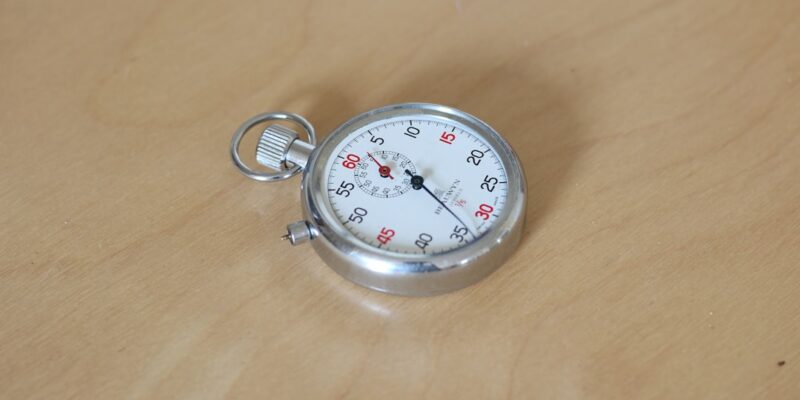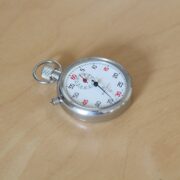
Interval Walking: The Ultimate Fat Loss Solution
Interval walking is a form of exercise that involves alternating between periods of high-intensity walking and periods of low-intensity walking or rest. This type of workout is designed to increase the heart rate and burn more calories than traditional walking. Interval walking has gained popularity in recent years as a way to maximize fat loss and improve cardiovascular health.
The concept of interval training has been around for decades, but it was primarily used by athletes and fitness enthusiasts. However, in recent years, interval training has become more mainstream and accessible to people of all fitness levels. Interval walking is a variation of interval training that is specifically tailored for walking.
Key Takeaways
- Interval walking is a form of exercise that involves alternating periods of high-intensity walking with periods of low-intensity walking.
- Interval walking can help with fat loss by increasing the number of calories burned during and after exercise, as well as improving cardiovascular health and metabolism.
- Benefits of interval walking over traditional walking include increased calorie burn, improved cardiovascular health, and greater variety in your workout routine.
- To incorporate interval walking into your daily routine, start with short intervals of high-intensity walking and gradually increase the duration and intensity over time.
- Interval walking may be a more sustainable and effective option for fat loss than running, as it is lower impact and can be easier to maintain over time.
How Interval Walking Helps in Fat Loss
Interval walking is an effective way to burn calories and promote fat loss. When you engage in high-intensity intervals during your walk, your body works harder and burns more calories than it would during a steady-state walk. This increased calorie burn can lead to greater fat loss over time.
One of the key factors that contribute to fat loss during interval walking is the afterburn effect, also known as excess post-exercise oxygen consumption (EPOC). After a high-intensity workout, your body continues to burn calories at an elevated rate for several hours. This means that even after you finish your interval walk, your body is still working hard to burn calories and fat.
Benefits of Interval Walking over Traditional Walking
Interval walking offers several benefits over traditional walking. First, it allows you to burn more calories in a shorter amount of time. By incorporating high-intensity intervals into your walk, you can increase the intensity of your workout and maximize calorie burn.
Interval walking also provides cardiovascular benefits. The high-intensity intervals help to improve cardiovascular fitness and increase endurance. This can lead to improved heart health and a reduced risk of cardiovascular diseases such as heart disease and stroke.
Additionally, interval walking can be a more engaging and enjoyable form of exercise compared to traditional walking. The variation in intensity keeps the workout interesting and can help to prevent boredom.
How to Incorporate Interval Walking into Your Daily Routine
| Metrics | Description |
|---|---|
| Interval Walking | A form of exercise that involves alternating periods of high-intensity walking with periods of low-intensity walking or rest. |
| Benefits | Improves cardiovascular health, increases endurance, burns calories, and can be done anywhere with no equipment needed. |
| Frequency | Recommended to do at least 3 times a week for 20-30 minutes per session. |
| Intensity | High-intensity intervals should be challenging but sustainable, while low-intensity intervals should allow for recovery. |
| Warm-up/Cool-down | Important to warm up with 5-10 minutes of low-intensity walking and cool down with 5-10 minutes of stretching. |
| Progression | Gradually increase the duration and intensity of the high-intensity intervals over time to continue challenging the body. |
If you’re new to interval walking, it’s important to start slowly and gradually increase the intensity of your workouts. Here are some tips on how to incorporate interval walking into your daily routine:
1. Start with a warm-up: Begin your walk with a few minutes of low-intensity walking to warm up your muscles and prepare your body for the workout.
2. Alternate between high-intensity and low-intensity intervals: During your walk, alternate between periods of high-intensity walking and periods of low-intensity walking or rest. For example, you could walk at a brisk pace for 1 minute, then slow down to a leisurely pace for 2 minutes. Repeat this cycle for the duration of your walk.
3. Gradually increase the intensity: As you become more comfortable with interval walking, gradually increase the intensity of your high-intensity intervals. You can do this by walking at a faster pace or incorporating short bursts of jogging or running into your intervals.
4. Cool down: Finish your walk with a few minutes of low-intensity walking to cool down and allow your heart rate to return to normal.
Interval Walking vs. Running: Which is Better for Fat Loss?
Interval walking and running are both effective forms of exercise for fat loss, but they have different benefits and considerations. Here’s a comparison of the two:
Interval walking:
– Lower impact: Walking is a low-impact exercise that puts less stress on the joints compared to running. This makes it a suitable option for people with joint issues or those who are new to exercise.
– Sustainable: Interval walking can be sustained for longer periods of time compared to running, making it a more sustainable fitness solution for long-term fat loss.
– Versatile: Interval walking can be done anywhere, anytime, without the need for special equipment or a gym membership.
Running:
– Higher calorie burn: Running typically burns more calories than walking due to the higher intensity and impact.
– Time-efficient: Running allows you to cover more distance in a shorter amount of time compared to walking, which can be beneficial for those with limited time for exercise.
– Greater cardiovascular benefits: Running at a higher intensity can provide greater cardiovascular benefits compared to walking.
Ultimately, the choice between interval walking and running depends on your personal preferences, fitness level, and any existing health conditions. It’s important to choose an exercise that you enjoy and can stick to in the long term.
How to Monitor Your Progress with Interval Walking
Monitoring your progress is an important part of any fitness routine, including interval walking. Here are some ways to track your progress and set achievable goals for fat loss:
1. Keep a workout journal: Record your interval walking workouts in a journal or fitness app. Include details such as the duration of your walk, the intensity of your intervals, and how you felt during and after the workout. This will allow you to track your progress over time and make adjustments as needed.
2. Use a fitness tracker: Wear a fitness tracker or use a smartphone app that can track your steps, distance, and heart rate during your interval walks. This will give you a more accurate picture of how many calories you’re burning and how your fitness is improving.
3. Set achievable goals: Set specific, measurable goals for fat loss with interval walking. For example, you could aim to walk for a certain number of minutes or cover a certain distance during each interval walk. Gradually increase the intensity or duration of your intervals as you become more fit.
4. Take progress photos: Take photos of yourself at regular intervals to visually track your progress. This can be a motivating way to see how your body is changing over time.
Interval Walking for Beginners: Tips and Tricks
If you’re new to interval walking, here are some tips and tricks to help you get started:
1. Start slow: Begin with shorter intervals of high-intensity walking and longer intervals of low-intensity walking or rest. As you become more comfortable, gradually increase the duration and intensity of your high-intensity intervals.
2. Listen to your body: Pay attention to how your body feels during and after your interval walks. If you experience pain or discomfort, slow down or take a break. It’s important to listen to your body and not push yourself too hard, especially when you’re just starting out.
3. Find a walking buddy: Walking with a friend or joining a walking group can make interval walking more enjoyable and help to keep you motivated. Plus, having someone to talk to can make the time go by faster.
4. Mix up your routes: Explore different routes and locations for your interval walks to keep things interesting. This can help to prevent boredom and make your workouts more enjoyable.
Interval Walking for Advanced Fitness Enthusiasts
If you’re an advanced fitness enthusiast looking to increase the intensity of your interval walks, here are some tips:
1. Increase the duration of your high-intensity intervals: Gradually increase the duration of your high-intensity intervals while decreasing the duration of your low-intensity intervals or rest periods. This will challenge your cardiovascular system and help to improve endurance.
2. Incorporate inclines: Find routes that include hills or inclines to add an extra challenge to your interval walks. Walking uphill requires more effort and can help to build strength in your lower body.
3. Add resistance: Consider wearing a weighted vest or carrying hand weights during your interval walks to increase the intensity and calorie burn. Start with lighter weights and gradually increase as you become stronger.
4. Mix in other exercises: Incorporate bodyweight exercises such as lunges, squats, or push-ups into your interval walks. This will help to increase the intensity and provide a full-body workout.
The Science behind Interval Walking and Fat Loss
The science behind interval walking and fat loss lies in the principles of metabolism and calorie burn. When you engage in high-intensity intervals during your walk, your body requires more energy to perform the exercise. This increased energy demand leads to a higher calorie burn during and after your workout.
Interval walking also activates the afterburn effect, which is the increased calorie burn that occurs after a high-intensity workout. During this period, your body continues to burn calories at an elevated rate as it works to restore oxygen levels, repair muscle tissue, and replenish energy stores.
Additionally, interval walking can help to increase your metabolic rate over time. Regular interval walking workouts can help to build lean muscle mass, which requires more energy to maintain compared to fat tissue. This means that even at rest, your body will burn more calories throughout the day.
Interval Walking as a Sustainable Fitness Solution for Long-Term Fat Loss
Interval walking is a sustainable fitness solution for long-term fat loss for several reasons. First, it is a low-impact exercise that can be sustained for longer periods of time compared to higher-impact activities like running or jumping. This makes it suitable for people of all fitness levels and reduces the risk of injury.
Second, interval walking can be easily incorporated into your daily routine without the need for special equipment or a gym membership. You can walk outdoors or on a treadmill, making it accessible and convenient.
Lastly, interval walking is a versatile form of exercise that can be modified to suit your individual needs and goals. You can adjust the intensity and duration of your intervals based on your fitness level and gradually increase as you become more fit.
In addition to its fat-burning benefits, interval walking also offers numerous health benefits. It can improve cardiovascular health, increase endurance, and reduce the risk of chronic diseases such as heart disease and diabetes.
In conclusion, interval walking is an effective and sustainable fitness solution for fat loss. By incorporating high-intensity intervals into your walks, you can maximize calorie burn, improve cardiovascular health, and increase endurance. Whether you’re a beginner or an advanced fitness enthusiast, interval walking can be tailored to suit your individual needs and goals. So lace up your walking shoes and start reaping the benefits of interval walking today!
FAQs
What is interval walking?
Interval walking is a form of exercise that involves alternating periods of high-intensity walking with periods of low-intensity walking or rest.
How does interval walking help with fat loss?
Interval walking can help with fat loss by increasing the number of calories burned during and after exercise. The high-intensity intervals increase the body’s metabolic rate, which can lead to greater fat burning.
What are the benefits of interval walking?
Interval walking can improve cardiovascular health, increase endurance, and help with weight loss. It can also be a low-impact form of exercise that is easier on the joints than running or other high-impact activities.
How often should I do interval walking?
The frequency of interval walking depends on individual fitness levels and goals. It is recommended to start with 2-3 sessions per week and gradually increase to 4-5 sessions per week.
How long should each interval be?
The length of each interval depends on individual fitness levels and goals. A common interval length is 30 seconds of high-intensity walking followed by 60 seconds of low-intensity walking or rest. However, intervals can be adjusted to be shorter or longer depending on individual needs.
What should I wear for interval walking?
It is recommended to wear comfortable, breathable clothing and supportive shoes with good traction. It is also important to dress appropriately for the weather and bring water to stay hydrated during exercise.
Is interval walking suitable for beginners?
Interval walking can be suitable for beginners, but it is important to start slowly and gradually increase intensity and duration. It is also recommended to consult with a healthcare professional before starting any new exercise program.



















6uyxli
Thanks for sharing. I read many of your blog posts, cool, your blog is very good.